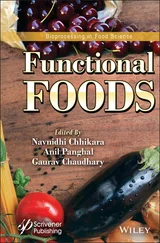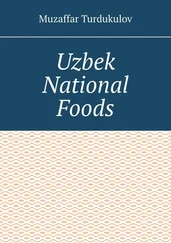C. Anandharamakrishnan - 3D Printing of Foods
Здесь есть возможность читать онлайн «C. Anandharamakrishnan - 3D Printing of Foods» — ознакомительный отрывок электронной книги совершенно бесплатно, а после прочтения отрывка купить полную версию. В некоторых случаях можно слушать аудио, скачать через торрент в формате fb2 и присутствует краткое содержание. Жанр: unrecognised, на английском языке. Описание произведения, (предисловие) а так же отзывы посетителей доступны на портале библиотеки ЛибКат.
- Название:3D Printing of Foods
- Автор:
- Жанр:
- Год:неизвестен
- ISBN:нет данных
- Рейтинг книги:3 / 5. Голосов: 1
-
Избранное:Добавить в избранное
- Отзывы:
-
Ваша оценка:
- 60
- 1
- 2
- 3
- 4
- 5
3D Printing of Foods: краткое содержание, описание и аннотация
Предлагаем к чтению аннотацию, описание, краткое содержание или предисловие (зависит от того, что написал сам автор книги «3D Printing of Foods»). Если вы не нашли необходимую информацию о книге — напишите в комментариях, мы постараемся отыскать её.
Explore the fascinating realm of 3D food printing and its applications 3D Printing of Foods
3D Printing of Foods
3D Printing of Foods
3D Printing of Foods — читать онлайн ознакомительный отрывок
Ниже представлен текст книги, разбитый по страницам. Система сохранения места последней прочитанной страницы, позволяет с удобством читать онлайн бесплатно книгу «3D Printing of Foods», без необходимости каждый раз заново искать на чём Вы остановились. Поставьте закладку, и сможете в любой момент перейти на страницу, на которой закончили чтение.
Интервал:
Закладка:
Wiley also publishes its books in a variety of electronic formats and by print‐on‐demand. Some content that appears in standard print versions of this book may not be available in other formats.
Limit of Liability/Disclaimer of Warranty The contents of this work are intended to further general scientific research, understanding, and discussion only and are not intended and should not be relied upon as recommending or promoting scientific method, diagnosis, or treatment by physicians for any particular patient. In view of ongoing research, equipment modifications, changes in governmental regulations, and the constant flow of information relating to the use of medicines, equipment, and devices, the reader is urged to review and evaluate the information provided in the package insert or instructions for each medicine, equipment, or device for, among other things, any changes in the instructions or indication of usage and for added warnings and precautions. While the publisher and authors have used their best efforts in preparing this work, they make no representations or warranties with respect to the accuracy or completeness of the contents of this work and specifically disclaim all warranties, including without limitation any implied warranties of merchantability or fitness for a particular purpose. No warranty may be created or extended by sales representatives, written sales materials or promotional statements for this work. The fact that an organization, website, or product is referred to in this work as a citation and/or potential source of further information does not mean that the publisher and authors endorse the information or services the organization, website, or product may provide or recommendations it may make. This work is sold with the understanding that the publisher is not engaged in rendering professional services. The advice and strategies contained herein may not be suitable for your situation. You should consult with a specialist where appropriate. Further, readers should be aware that websites listed in this work may have changed or disappeared between when this work was written and when it is read. Neither the publisher nor authors shall be liable for any loss of profit or any other commercial damages, including but not limited to special, incidental, consequential, or other damages.
Library of Congress Cataloging‐in‐Publication Data Names: Anandharamakrishnan, C., author. | Moses, Jeyan A., author. | Anukiruthika, T., author. Title: 3D printing of foods / C. Anandharamakrishnan, Indian Institute of Food Processing Technology (IIFPT), Thanjavur, India, Jeyan A. Moses, Indian Institute of Food Processing Technology (IIFPT), Thanjavur, India, T. Anukiruthika, Indian Institute of Food Processing Technology (IIFPT), Thanjavur, India. Other titles: Three dimensional printing of foods Description: First edition. | Hoboken, NJ : Wiley, [2021] | Includes bibliographical references and index. Identifiers: LCCN 2021040694 (print) | LCCN 2021040695 (ebook) | ISBN 9781119669821 (hardback) | ISBN 9781119669753 (adobe pdf) | ISBN 9781119671800 (epub) Subjects: LCSH: Three‐dimensional food printing. Classification: LCC TP372.85 .A53 2021 (print) | LCC TP372.85 (ebook) | DDC 664–dc23/eng/20211105 LC record available at https://lccn.loc.gov/2021040694LC ebook record available at https://lccn.loc.gov/2021040695
Cover Design: Wiley
Cover Image: © Alex_Traksel/Shutterstock
Preface
Gone are the days when food was consumed by the local population within a short span after the cultivation/harvest season. Today, food processing and preservation strategies have made major strides in striving to ensure food and nutritional security, at large. In recent years, with emerging applications in a range of other fields, 3D printing of foods has gained interest in research and technology development. Food processing is a complex and interdisciplinary field, relating agriculture, a series of postharvest unit operations, an intricate food supply chain, and stringent quality/safety parameters, all interlinked with consumer perception and acceptance. With the rising need for food customization, and providing personalized foods in terms of taste, mouthfeel, appearance, and nutrition, 3D printing of foods is gaining importance. 3D printing is an additive manufacturing approach involving layer‐by‐layer fabrication, using robotic controls. Advantages in terms of bulk customization, rapid prototyping, reduced wastages, and increasing health care applications have been the major strengths of the technology. Aerospace, automotive, and medical industries are the biggest takers, and technology is revolutionizing the manufacturing sector. The present scenario of the rising global population has increased the demand for the production of foods. In this regard, 3D printing allows us to produce foods sustainably even utilizing underexplored food sources and waste/by‐products. 3D printing of foods remains to offer a promising solution in satisfying global hunger, importantly, the ‘hidden hunger’: malnourishment. 3D food printing revolutionizes to customize foods based on genomic and biometric data, which are sensorially acceptable, making ‘imagination into reality.’ Eventually, food printing is poised to have a great impact on the economy, as it paves way for bridging the gap between small‐ and large‐scale entrepreneurs, thereby providing a great degree of flexibility to consumers in choosing the food in the way they want to eat.
Food printing is a rapidly emerging field and has the attractiveness of a range of advantages focusing on product customization and better utilization of resources. With growing consumer demands, we can be assured that this field would take a key segment in the food processing sector. However, the R&D needs are high and need to be better addressed before widespread commercialization and adoption of the technology. The speed of production must match/supplement other food processing technologies; it remains a challenge to bring the perfect blend between customization and mass production. Very importantly, the cost of a food 3D printer needs to be majorly relooked, considering prospects of widespread commercialization and usage. Addressing such concerns can for sure bring about the best with this technology in the food industry. While it continues to remain a debatable concern if 3D printed food materials are categorized as ‘processed foods,’ we envisage that 3D food printing in combination with food processing techniques can bring about a range of synergistic applications. This article focuses on the foundation of 3D food printing, the aspect of ‘food printability.’ We explain the complexity of defining this term and the huge research gap that needs to be addressed. Hence, we can hope that with a strong understanding of the intricacies of food properties and 3D printing mechanisms, we would one day see food 3D printers in every kitchen!
C. Anandharamakrishnan
Jeyan A. Moses
T. Anukiruthika
1 Introduction to 3D Printing Technology
CHAPTER MENU
1 1.1 Introduction
2 1.2 Digital Manufacturing: From Rapid Prototyping to Rapid Manufacturing
3 1.3 Milestones in 3D Printing Technology
4 1.4 Different Historical Eras in 3D Printing 1.4.1 Ancient Age 1.4.2 Middle Age 1.4.3 Modern Age
5 1.5 Prospects of 3D Food Printing
6 1.6 Design Considerations of 3D Printer1.6.1 Printer Configurations 1.6.2 Components of a Typical 3D Printer 1.6.2.1 Enclosure, Build Plate, and Guide Rails 1.6.2.2 Mechanical Drive Systems 1.6.2.3 Microprocessor Controlling System
7 1.7 Software Requirements and Hardware Integration
8 1.8 Designing, Digital Imaging, and Modelling 1.8.1 Image Acquisition, Processing, and Modelling 1.8.2 Repairing and Post-Processing
9 1.9 Food Printing Platforms 1.9.1 Universal Platform 1.9.2 User-Defined Platform 1.9.3 Applicability of User Interface Systems
Читать дальшеИнтервал:
Закладка:
Похожие книги на «3D Printing of Foods»
Представляем Вашему вниманию похожие книги на «3D Printing of Foods» списком для выбора. Мы отобрали схожую по названию и смыслу литературу в надежде предоставить читателям больше вариантов отыскать новые, интересные, ещё непрочитанные произведения.
Обсуждение, отзывы о книге «3D Printing of Foods» и просто собственные мнения читателей. Оставьте ваши комментарии, напишите, что Вы думаете о произведении, его смысле или главных героях. Укажите что конкретно понравилось, а что нет, и почему Вы так считаете.










